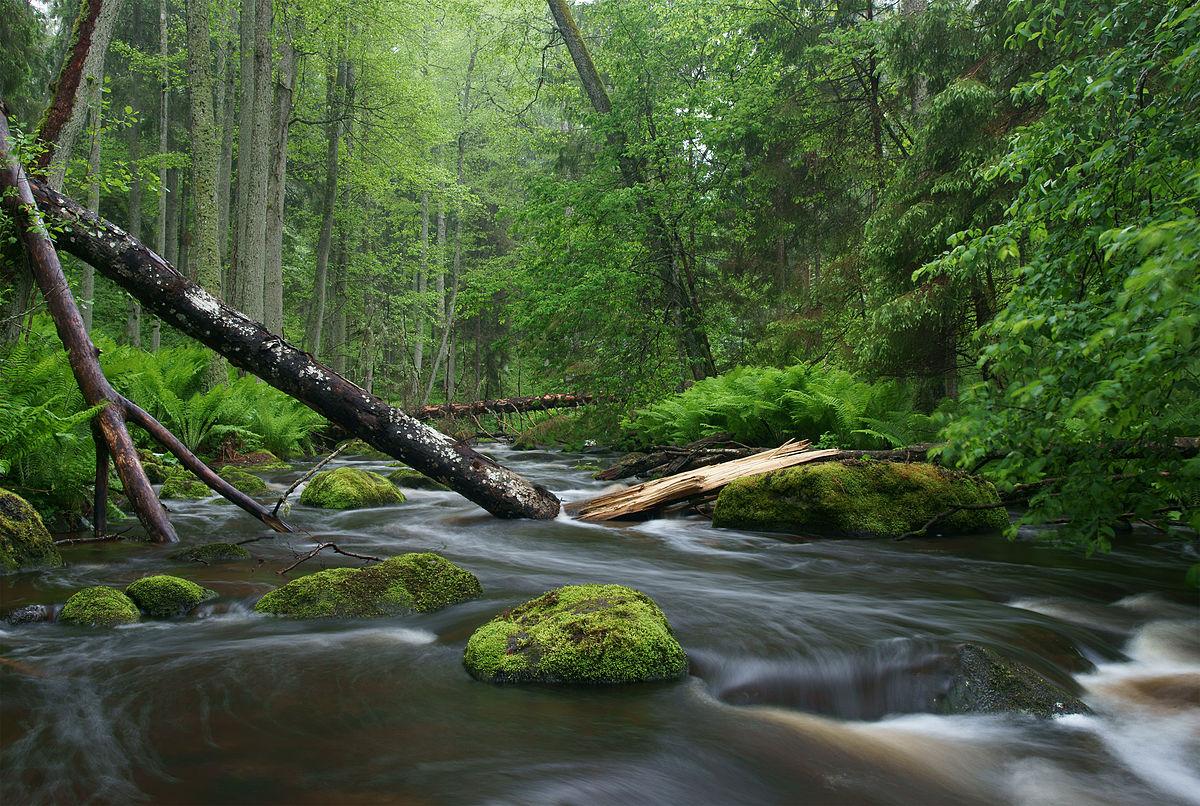In our fast-paced world, where the hum of technology often drowns out the gentle whispers of the natural environment, many are seeking solace and clarity. As urban landscapes grow denser and screens dominate our attention, a timeless refuge lies just beyond our concrete jungles—the great outdoors. Nature, in all its forms, offers more than just breathtaking vistas; it serves as a sanctuary for the weary mind and a balm for the spirit. This article explores the profound connection between time spent in nature and mental well-being, uncovering how the rustle of leaves, the song of birds, and the embrace of sunlight can restore balance and foster peace within us. Join us on a journey to rediscover the healing power of the natural world and learn how to cultivate moments of tranquility amidst the chaos of modern life.
Table of Contents
- Exploring the Healing Power of Green Spaces
- The Science Behind Natures Impact on Mental Health
- Practicing Mindfulness in Natural Environments
- Simple Ways to Incorporate Nature into Daily Life
- The Way Forward
Exploring the Healing Power of Green Spaces

Surrounded by the vibrant hues of nature, the intrinsic relationship between green spaces and mental well-being is undeniable. The serenity found in parks, gardens, and forests serves as a sanctuary for those seeking refuge from the chaos of urban life. Studies have shown that spending time in these natural environments can lead to improved mood, reduced anxiety, and enhanced cognitive function. This is attributed to factors such as:
- Exposure to fresh air: Enhances oxygen levels, boosting brain function.
- Natural scenery: Provides visual stimuli that stimulate the mind.
- Physical activity: Engaging in movement increases endorphin levels, fostering happiness.
The rhythmic sound of rustling leaves and chirping birds can drown out the mental noise that often accompanies modern living. Research highlights a significant correlation between green space access and mental health improvements, making it vital to integrate nature into daily life. Consider the benefits of visiting these rejuvenating spaces:
| Benefit | Description |
|---|---|
| Stress Reduction | Natural environments can lower cortisol levels, alleviating stress. |
| Enhanced Creativity | Exposure to green spaces can inspire innovative thinking. |
| Community Connection | Parks and gardens often foster social interactions, building relationships. |
The Science Behind Natures Impact on Mental Health

The connection between our mental health and the natural world is profound and multi-faceted. Research shows that exposure to nature can induce physiological changes, such as reduced levels of the stress hormone cortisol. When we spend time outdoors, our brains engage in a process known as soft fascination, allowing us to recharge our mental resources. This gentle engagement with nature helps improve attention restoration, enhances mood, and fosters a sense of calm. Some key aspects contributing to this phenomenon include:
- Biophilia: Our innate desire to connect with nature and other living beings.
- Natural Light: Exposure to sunlight aids in regulating circadian rhythms and boosting vitamin D, which is vital for mental health.
- Green Spaces: Access to parks and gardens encourages physical activity, which is linked to improved mental well-being.
Moreover, studies indicate that engaging with natural environments can enhance cognitive functions such as memory and creativity. Activities like hiking, gardening, or even simply walking in a park provide individuals with opportunities to engage their senses and promote mindfulness. The following table outlines some of the mental benefits of spending time in nature:
| Mental Benefit | Description |
|---|---|
| Stress Reduction | Lower cortisol levels and reduced feelings of anxiety. |
| Enhanced Mood | Increased feelings of happiness and decreased depressive symptoms. |
| Cognitive Improvement | Boosts memory retention and improves creative thinking. |
| Mindfulness | Encourages present-moment awareness and gratitude. |
Practicing Mindfulness in Natural Environments
Immersing ourselves in natural environments offers a profound opportunity to cultivate mindfulness. The sights, sounds, and scents of nature create a backdrop that effortlessly draws our attention to the present moment. When we take time to sit quietly beneath the canopy of trees or listen to the gentle rustle of leaves, we can start to notice the subtle beauty that surrounds us. Engaging in practices such as deep breathing or guided meditation in these serene settings can enhance our connection to the world around us. Consider the following elements to enrich your mindfulness practice in nature:
- Breath Awareness: Focus on the rhythm of your breath as you inhale the fresh air.
- Soundscapes: Listen closely to the symphony of birds, wind, and water.
- Grounding Techniques: Feel the earth beneath you, anchoring yourself in the present.
- Nature Walks: Engage your senses by observing the colors, textures, and movements in your surroundings.
To deepen this experience, consider incorporating a reflective practice into your time spent outdoors. Maintaining a nature journal where you note your observations and feelings can provide insight into how these moments affect your mental well-being. Below is a simple table suggesting mindfulness activities to explore during your outdoor adventures:
| Activity | Description |
|---|---|
| Mindful Hiking | Walk slowly, noticing each step and the terrain. |
| Nature Sketching | Draw what you see, capturing the essence of the moment. |
| Cloud Watching | Lay back and observe the changing shapes in the sky. |
Simple Ways to Incorporate Nature into Daily Life
Bringing nature into your day-to-day life can be as simple as making a few intentional changes. Start by opening your windows to let in natural light and fresh air, creating a bright and inviting atmosphere. Adding indoor plants not only freshens the air but also serves as a beautiful reminder of the outdoors. Consider designating a small corner in your home for a mini garden; it can be a few potted herbs or a vibrant flower arrangement. Additionally, make it a habit to take short walks in nearby parks during breaks, allowing your mind to reset amidst the greenery and sounds of nature, which can significantly enhance mental clarity and mood.
You can also incorporate nature into your routines with small yet impactful changes. Try starting your morning with a cup of tea or coffee on your balcony or patio to soak in the morning sun. Timing a daily mindfulness practice outside, even just for a few minutes, can heighten your connection to your surroundings. Here are some unique ways to embrace the natural world:
- Nature Sounds: Listen to nature soundtracks during work or relaxation to create a peaceful environment.
- Outdoor Reading: Choose a cozy spot in your garden or at a nearby park to indulge in your favorite book.
- Nature Art: Collect leaves, flowers, and stones to create art pieces that reflect your connection to the outdoors.
The Way Forward
As we wander through the winding trails of life, the embrace of nature stands as a steadfast companion, reminding us of the serenity that can be found in the simplest of moments. From the rustling leaves to the gentle whispers of the wind, the natural world has a profound ability to soothe our minds and nourish our spirits.
In our exploration of how nature nurtures mental well-being, we have uncovered the delicate balance between our inner landscapes and the external environments that cradle us. Whether it’s the vibrant hues of a sunset, the rhythmic crashing of ocean waves, or the quiet stillness of a forest, these experiences serve as invitations to pause, reflect, and reconnect with ourselves.
As we step back into our daily lives, let us carry the lessons learned from nature’s wisdom. Embrace the time spent outdoors, seek solace in the green spaces surrounding us, and cultivate a mindful awareness of the beauty that exists in every corner of our world. In doing so, we may find that peace is not just a destination but a journey we walk hand in hand with the rhythms of the earth. So, let nature be your guide, and may you continue to discover the healing power it holds—one breath, one step, and one moment at a time.



